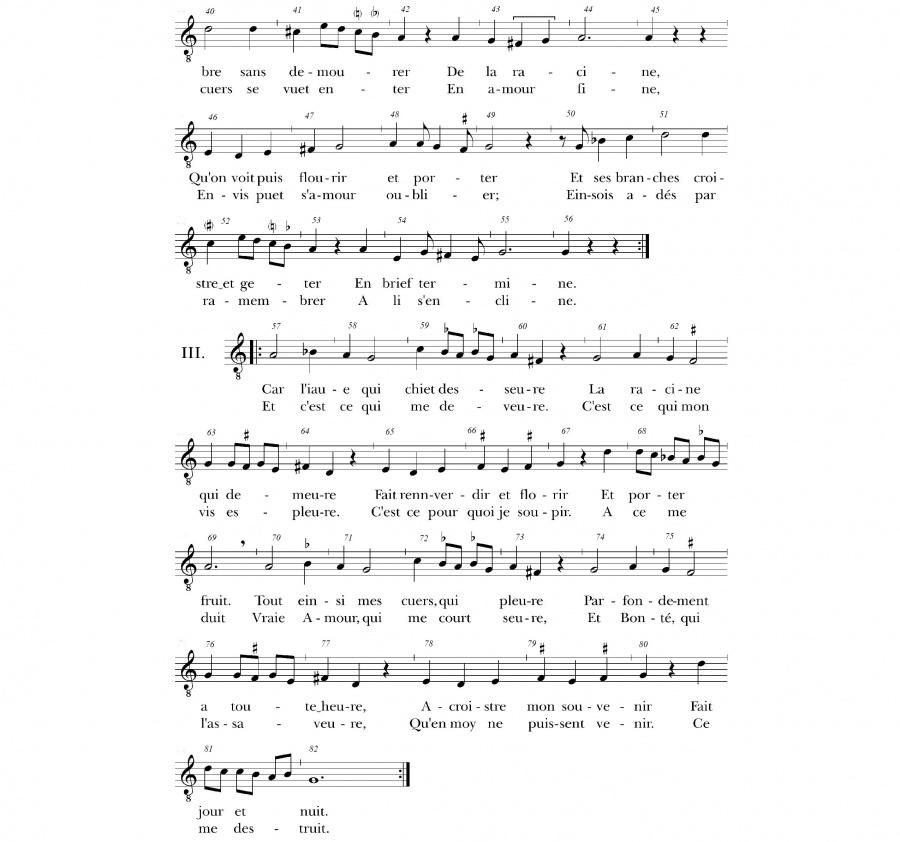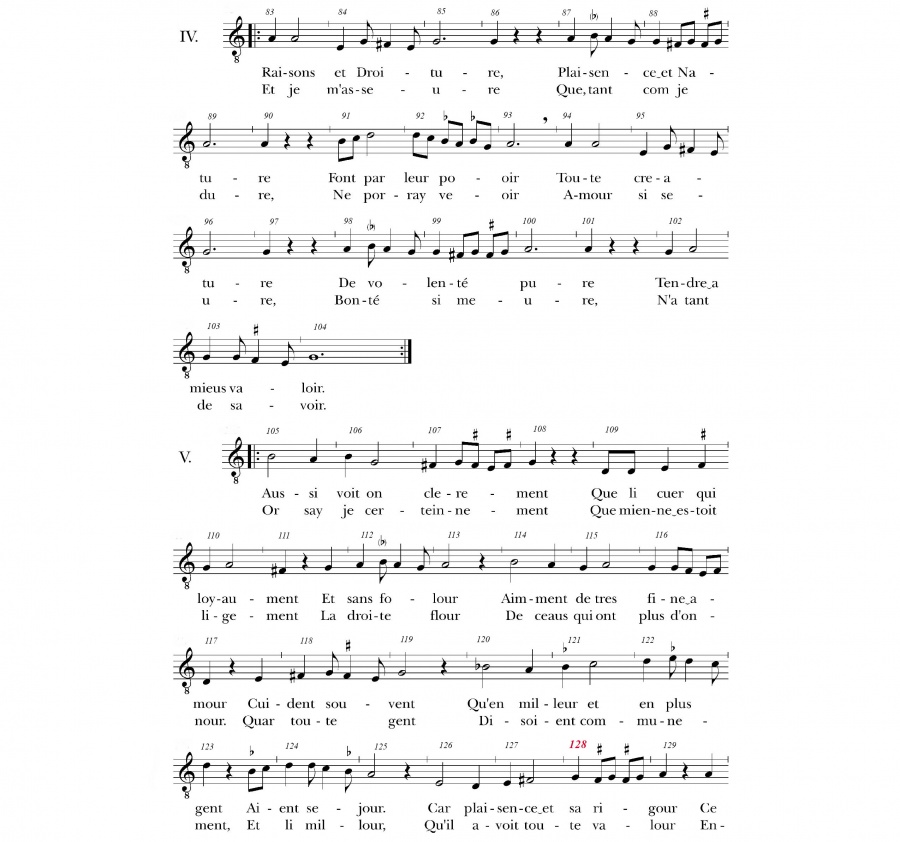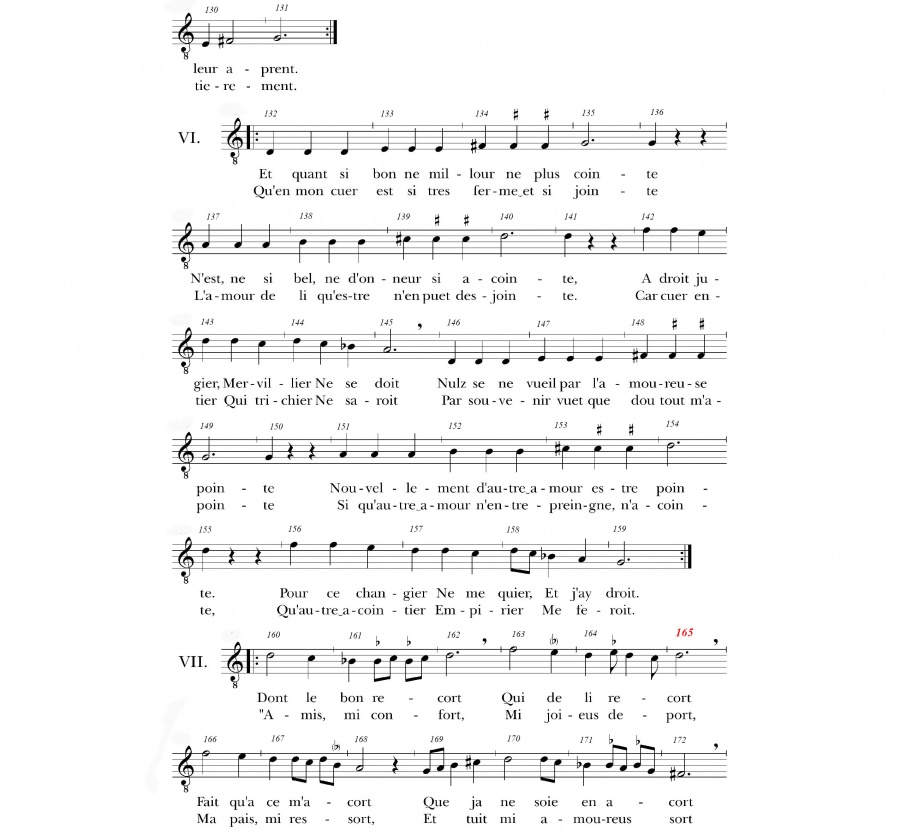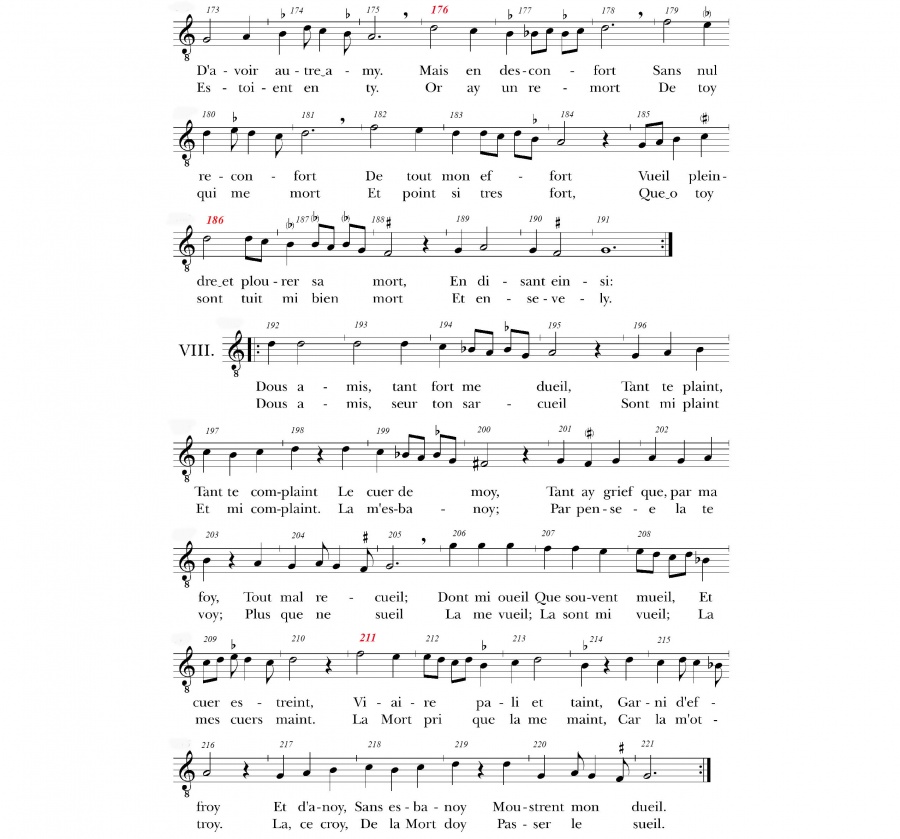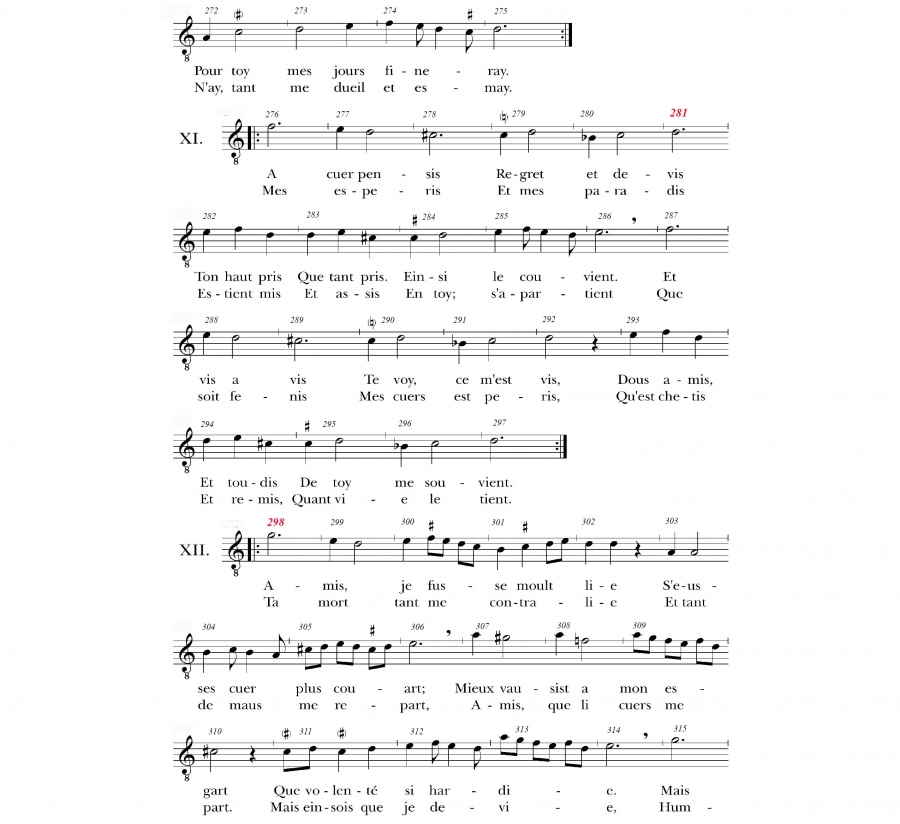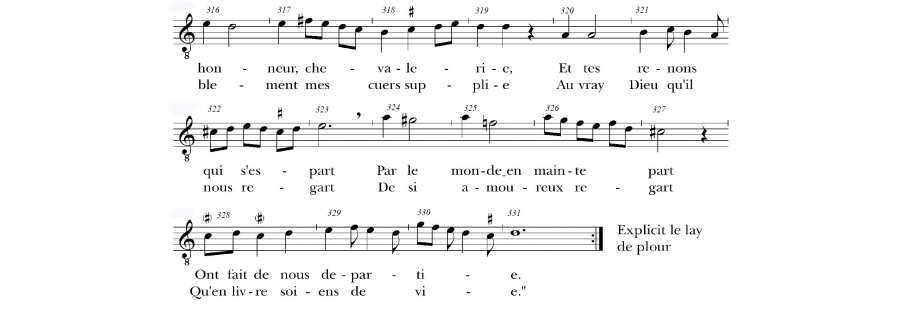by: Guillaume de Machaut (Author) , R. Barton Palmer (Editor) , Yolanda Plumley (Editor) , Uri Smilansky (Author)
Le Lay de Plour
GUILLAUME DE MACHAUT, LE LAY DE PLOUR: EXPLANATORY NOTES
Abbreviations: BD: Chaucer, Book of the Duchess, ed. Benson; DMF: Analyse et Traitement Informatique de la Langue Française Dictionnaire de Moyen Français; LGW: Chaucer, Legend of Good Women, ed. Benson; CA: Gower, Confessio Amantis; Hassell: Hassell, Middle French Proverbs, Sentences, and Proverbial Phrases; JRB: Machaut, Le Jugement dou Roy de Behaingne; JRN: Machaut, Le Jugement dou Roy de Navarre; OM: Ovide Moralisé, ed. Cornelis de Boer; RR: Roman de la Rose, trans. Dahlberg; TC: Chaucer, Troilus and Criseyde, ed. Benson.
1ff. Ci commence le lay de plour. This text, first referenced in line 4182 of The Art of Courtly Love, is likely to be the Lay de Plour, which is included in this volume. The lay is the most complicated of all lyric forms, composed as it is of twelve stanzas of varying length and meter, with no pattern of rhyme repeated from one stanza to the next. Confusingly, the term lai is also used in the Middle Ages to refer to short narrative poems, e.g., the Lais of Marie de France.
GUILLAUME DE MACHAUT, LE LAY DE PLOUR: MUSICAL NOTES
m. 1–2 There is no dot after first brevis, but it is clear from spacing and repetition (m. 18–19).
m. 3–4 While the given underlay also works, underlay lines show the original intention here (elision of ‘-me’ and ‘a’, and placement of ‘ou-’).
m. 8 ‘-bli-’ was added faintly by a different hand. Its underlay is not entirely clear.
m. 11 A fa-sign (flat) added perhaps by a corrector’s hand.
m. 20–21 The second text ‘m’a’ is written at the beginning of a new line rather than at the end of the old one, which creates alignment problems between the two lines of text.
m. 128 The second text ‘-te’ ends a line rather than begin the next. Adjusted according to the first text underlay.
m. 165 The second text ‘-port’ was wrongly copied at the beginning of the next line, disrupting the alignment of the texts. Corrected according to the first text.
m. 176–77 There are some erasures here.
m. 186 There are more erasures or other damage here.
m. 211–13 No dot appears here. One can stay closer to the notational rules and add an extra measure here:
But the previous line and rhythmic structure of this section suggests not to.
m. 225 There is some small erasure or damage here.
m. 250 The fa-sign may be the work of a different hand.
m. 258 There is some erasure or damage affecting also the text above.
m. 281 A rest (or dot) is missing after the brevis, but the spacing and the repetition make it clear an imperfection was not intended here.
m. 298–301 The underlay is not entirely clear. Adjusted according to the first strophe.







